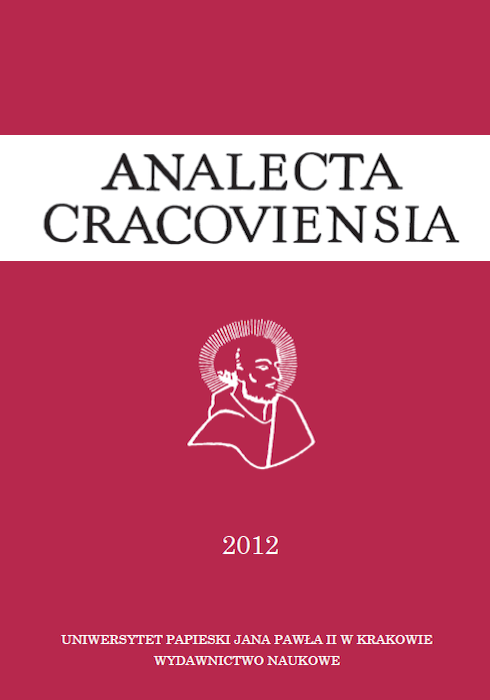Średniowieczna retoryka jako czynnik kształtujący sztuki plastyczne. Przegląd podstawowych problemów
DOI:
https://doi.org/10.15633/acr.20Słowa kluczowe:
Middle Ages, rhetoric, visual artsAbstrakt
In the Middle Age the rhetoric was one of the seven liberal arts. Its position in the medieval culture Has been confirmed by Cassiodor, Isidor of Sevilla, Augustin of Hippona and Martianus Capella. The medieval rhetoric was composedof five parts: inventio (invention), dispositio (disposition), elucutio (elocution), memoria (memory) and pronuntiatio (pronuntiation). Only three of them exertet real influence on the fine arts. Inventio controlled the proces of choice of the ideas, which have benn represented by images in work of arts. Dispositio collocated the images in the whole structure of work of art. Elocutio applicated some rhetorical figure in order to communicate some massages throughout the images. In the Middle Ages existed two sources, which inspired the mediewal rhetoric. The fitst Skurce was the ancien, greek and roman rhetoric , the second – the semitic, biblical rhetoric. In the Bible exist two important literary and rhetorical structures – the parallelism and the centripetal construction. These structures influenced some models of composition of narrative cycles and series of images. Rhetor – a hypothetical personage, educated in trivium and quatrivium and expert in the rhetoric, played important role in the mediewal culture. He collaborated with artist and he applicated the rhetorical methods and rhetorical figure in the creation of works of art.
Pobrania
Opublikowane
Numer
Dział
Licencja
Prawa autorskie (c) 2012 Dariusz Tabor

Praca jest udostępniana na licencji Creative Commons Attribution-NonCommercial-NoDerivatives 3.0 Unported License.
Obecnie autorzy publikujący w czasopiśmie udzielają jego wydawcy zgody o następującej treści:
- Autor zachowuje autorskie prawa majątkowe do utworu, a jednocześnie udziela wydawcy czasopisma zgody na jego pierwszą publikację w wersji drukowanej i wersji online na licencji Creative Commons Uznanie autorstwa 4.0 Międzynarodowe oraz zgody na wykonywanie opracowań, w tym przekładów.
- Autor ma możliwość udzielania zgody niewyłącznej na opublikowanie utworu w wersji, która ukazała się w czasopiśmie (np. zamieszczenia go w repozytorium instytucjonalnym lub opublikowania w książce), wraz z informacją o jego pierwszej publikacji w czasopiśmie.
- Autor może umieścić swój utwór online (np. w repozytorium instytucjonalnym lub na swojej stronie internetowej) jeszcze przed zgłoszeniem utworu do czasopisma.

